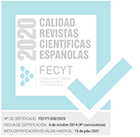Diagnosis of the aromatic and medicinal plant sector in Morocco: Case of the cooperatives and associations of the Meknès-Tafilalt area
Resumen
The cooperatives and associations in the medicinal and aromatic plant (MAP) sector are completely dependent on thepressure of market demand, and their products need to comply with required quality criteria and delivery time constraints.We conducted a survey of the activities of the cooperatives and associations involved in the production of genetic plant resourcesand their socioeconomic impact in order to identify the problems affecting this sector, and to improve the MAP’sproduction conditions and the income of the marginalized rural population. This survey looked at 11 associations and cooperativesoperating in the Meknès-Tafilalt area in Morocco. The results of the botanical survey identified 30 species from12 families, exploited in their natural state for commercial use. The total annual production is 494 tons of dried plants. Rosemaryis the most widely used, with 23% of the total production, 19% of which is produced by the Ajaâbou Cooperative.However, the exploitation of these species in their natural state is haphazard, and presents a threat to the sustainability ofresources. The products are not properly identified, and few producers use good technical harvesting practices. To improvesustainable commercial potential and the competitiveness of the products, MAP cooperatives and associations should incorporatepractical standards of quality, traceability, good collection and cultivation of the species.
Descargas
Descarga artículo
Licencia
LICENCIA DE USO: Los artículos a texto completo incluidos en el Portal de Revistas Científicas Complutenses son de acceso libre y propiedad de sus autores y/o editores. Por tanto, cualquier acto de reproducción, distribución, comunicación pública y/o transformación total o parcial requiere el consentimiento expreso y escrito de aquéllos. Cualquier enlace al texto completo de los artículos del Portal de Revistas Científicas Complutenses debe efectuarse a la URL oficial de la Universidad Complutense de Madrid.









